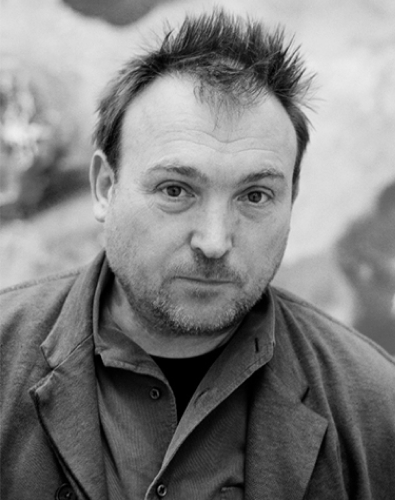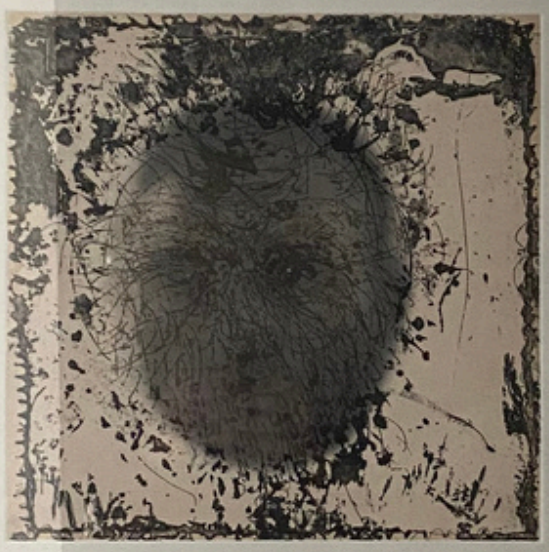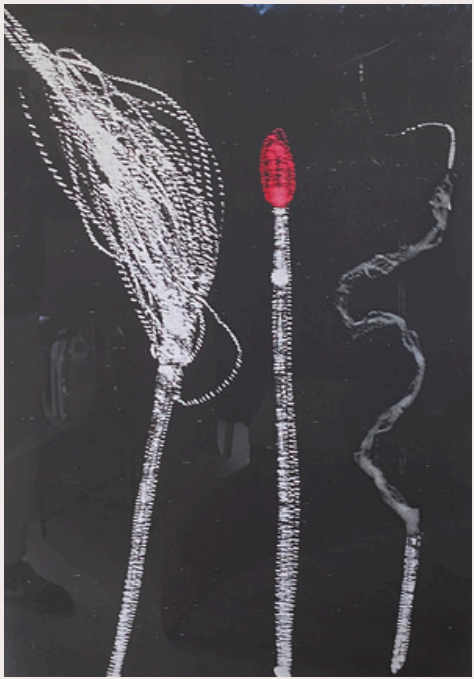Miquel Barceló was born on January 8, 1957, in Felanitx, Mallorca, Spain, into a family deeply immersed in artistic expression. His mother, a painter, played a crucial role in nurturing his early interest in art. Barceló’s initial formal training at the School of Fine Arts in Palma de Mallorca and later at the Royal Academy of Fine Arts of Sant Jordi in Barcelona was brief, as he found the academic environment restrictive. Instead, he pursued a self-directed education, drawing inspiration from literature, travel, and nature.
By the late 1970s, Barceló had already begun experimenting with textured surfaces, natural pigments, and unconventional materials, an approach that would become a hallmark of his career. Early influences included Jean Dubuffet and Art Brut, as well as Antoni Tàpies and the Informalism movement, which emphasized gestural abstraction and material experimentation.
Rise to International Acclaim (1980s-1990s)
Barceló’s breakthrough came in 1982, when his work was included in the prestigious international exhibition Documenta 7 in Kassel, Germany, alongside avant-garde figures such as Joseph Beuys and Anselm Kiefer. This recognition propelled him onto the global stage, and he soon gained representation with leading galleries, including the renowned Galerie Bruno Bischofberger in Zurich.
During this period, Barceló’s paintings explored themes of decay, transformation, and entropy, often incorporating organic materials like sand, ash, and natural dyes. His frequent travels, particularly to Africa (Mali and Burkina Faso), Italy, and France, had a profound impact on his work, as he experimented with earthy palettes and raw textures inspired by desert landscapes.
In 1986, he became the youngest artist ever to have a retrospective at the Centre Pompidou in Paris. By the 1990s, his work was being exhibited in major institutions such as the Museo Nacional Centro de Arte Reina Sofía (Madrid), the Guggenheim Museum (New York), and the Louvre (Paris).
Signature Works & Monumental Projects
- UN Human Rights Council Dome (2008, Geneva)
Barceló’s most ambitious public commission came in 2008 when he was tasked with creating a monumental installation for the Human Rights and Alliance of Civilizations Chamber at the United Nations in Geneva. The 1,400-square-meter dome features a surreal, textured ceiling with multicolored stalactites, made from over 100 tons of paint infused with pigments from around the world. The installation represents an abstract, ever-changing universe, symbolizing unity and the fragility of human rights. - Louvre Chapel Series (2004-2007, Paris)
In a historic commission, Barceló became the first contemporary artist to be invited to create a major work for the Louvre Museum. He produced a series of large-scale paintings interpreting Dante’s Divine Comedy, which were displayed in the Louvre’s Chapel of St. Louis. This project solidified his place among the most significant contemporary painters. - Notre Dame Tapestries (2024, Paris)
One of his most recent major projects is a commission to create three monumental tapestries for the reconstructed Notre Dame Cathedral in Paris. These works, woven at the prestigious Gobelins Manufactory, reinterpret Old Testament stories through Barceló’s signature expressive style.
Technique, Philosophy, and Materials
Barceló’s approach to art is deeply tactile, physical, and experimental. He frequently employs layering, erosion, and decomposition techniques, allowing natural processes like oxidation and evaporation to shape the final result. His obsession with materiality has led him to work with an array of media, including:
- Paintings: Thick impasto textures with mixed media elements such as sand, clay, and organic matter.
- Ceramics & Sculpture: Since the late 1990s, Barceló has extensively explored ceramics, particularly in collaboration with artisans in Mali and Mallorca. His sculptural works often evoke the primal, elemental qualities of ancient artifacts.
- Watercolors & Drawings: Known for his delicate yet powerful watercolors, especially those capturing African landscapes, bullfighting, and marine life.
- Books & Illustrations: Barceló has illustrated numerous literary works, including a special edition of Dante’s Divine Comedy and Don Quixote.
His philosophy is deeply influenced by existentialism, mysticism, and the unpredictable nature of life. He once stated:
“A painting must be like an object found on the beach, something discovered by chance.”
Market Value & Record Sales
Miquel Barceló is among the highest-valued contemporary Spanish artists, with his works commanding millions at auctions. Some of his most expensive sales include:
- “Faena de Muleta” (1990) – Sold for $5.5 million at Sotheby’s in 2011.
- “Tres ics” (1990s) – Sold for €1.5 million at Christie’s in 2011.
- “Pase de Pecho” (1990s) – Estimated auction value over $3 million.
His works are part of prestigious collections such as the Guggenheim Museum (New York), the Centre Pompidou (Paris), and the Reina Sofía Museum (Madrid).
Recent Developments & Legacy
In 2024, Barceló published his memoir, “De la vida mía,” a deeply personal compilation of photographs, notes, paintings, and sketches reflecting his artistic evolution. He continues to push creative boundaries with new projects in textiles, sculpture, and large-scale installations.
Today, Miquel Barceló stands as a pioneering force in contemporary art, blending material experimentation, cultural narratives, and a deep engagement with nature and human existence. His legacy cements him as one of Spain’s most influential living artists, comparable to figures like Antoni Tàpies and Pablo Picasso.




